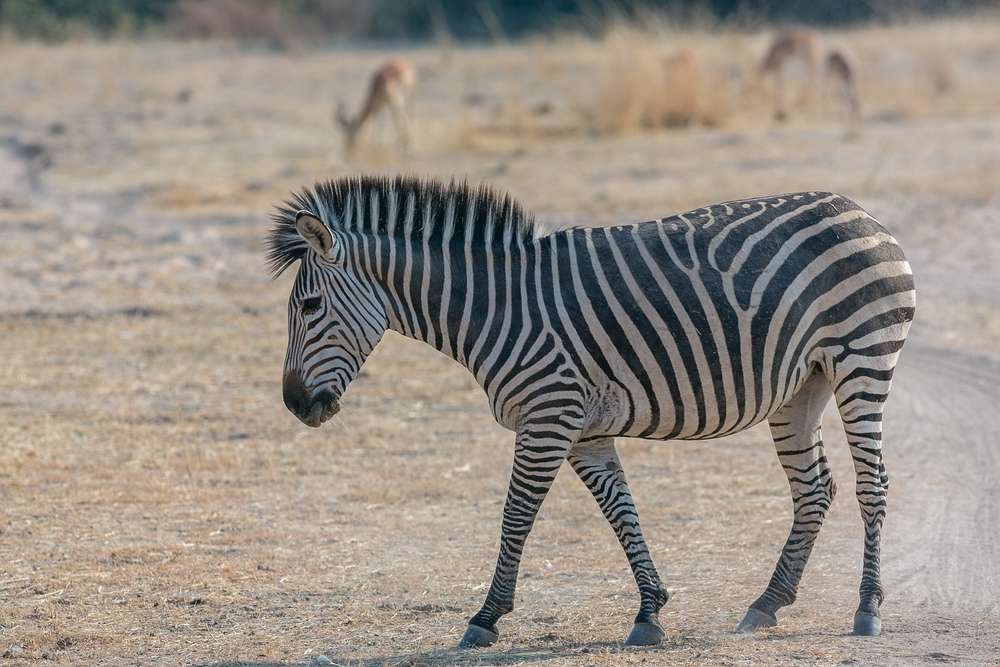Burchell’s Zebra
( bontequagga, Damaraland zebra or Zululand zebra )
- Equus quagga burchellii
- IUCN Status: Near Threatened
- Trend: decreasing

- Kingdom: Animalia
- Phylum: Chordata
- Class: Mammalia
- Order: Perissodactyla
- Family: Equidae
- Genus: Equus
Share:
General Information
Burchell’s zebra is the only subspecies of zebra which may be legally farmed for human consumption. Zebras have shiny coats that dissipate over 70% of incoming heat. The black and white stripes are a form of camouflage called disruptive coloration that breaks up the outline of the body. Although the pattern is visible during daytime, at dawn or in the evening when their predators are most active, zebras look indistinct and may confuse predators by distorting true distance. Zebra are known to have the most deadliest kick in the animal kingdom. When threatened, an adult zebra can kill a fully grown male African lion with a single blow to the body. Though it is difficult to get a precise measurement, it is thought that a zebra can kick with nearly 136 kg of force.
Fun Facts!
Description
- Weight: 230 - 320 kg
Ecology and Behaviour
Zebra are related to the Horse family and are gregerious in nature. Family groups are stable members maintaining strong bonds over many years. Mutual grooming, where zebras stand together and nibble the hair on each other’s neck and back, helps develop and preserve these bonds. Family members look out for one another, if one becomes separated from the rest, the others search for it. The group adjusts its traveling pace to accommodate the old and the weak. Zebras are important prey for lions and hyenas, and to a lesser extent for hunting dogs, leopards and cheetahs. When a family group is attacked, the members form a semicircle, face the predator and watch it, ready to bite or strike should the attack continue. If one of the family is injured the rest will often encircle it to protect it from further attack. They usually move in groups and usually with wildebeest, hartebeest or roan.
Conservation
They are listed as a “Near Threatened” species on the IUCN Red List and are decreasing in number.
Distribution and Habitat
Zebras are found in most of the Parks but more abundantly in the South Luangwa National Park.
Interaction with humans
Burchell’s zebra is the only subspecies of zebra which may be legally farmed for human consumption.
No donation to this project yet.
| M | T | W | T | F | S | S |
|---|---|---|---|---|---|---|
| 1 | 2 | 3 | 4 | 5 | 6 | 7 |
| 8 | 9 | 10 | 11 | 12 | 13 | 14 |
| 15 | 16 | 17 | 18 | 19 | 20 | 21 |
| 22 | 23 | 24 | 25 | 26 | 27 | 28 |
| 29 | 30 | 31 | ||||


